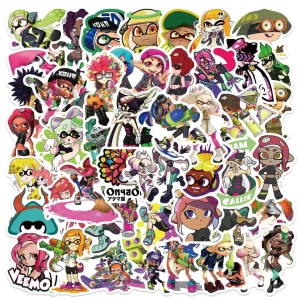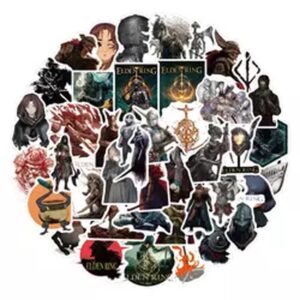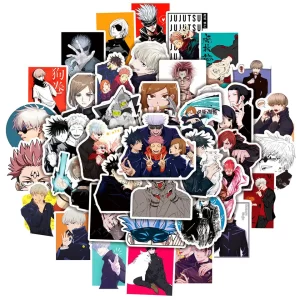When I think of 90’s platformers, my mind immediately goes to games like Super Mario World, Sonic the Hedgehog, and to a lesser extent, Bubsy. Each of those games is unique in its own way, from visual style to gameplay mechanics to soundtrack. During the 80’s and 90’s, a lot of the games played around the world started in Japan, the home of companies like Sega and Nintendo. At times, for one reason or another, games would be changed before they were shipped off to Europe and the Americas.
In 1990, Sega released a game for the Sega Mega Drive called Magical Hat no Buttobi Tabo! Daibōken or Magical Hat Flying Turbo! Adventure. The game’s visual elements, levels, and soundtrack were based on the anime series Magical Hat, though due to licensing issues the game couldn’t be released outside of Japan. Changes were made to the game’s graphics, level design, soundtrack, and miscellaneous elements and a new game was ready to ship internationally.
And thus, Decap Attack was born.
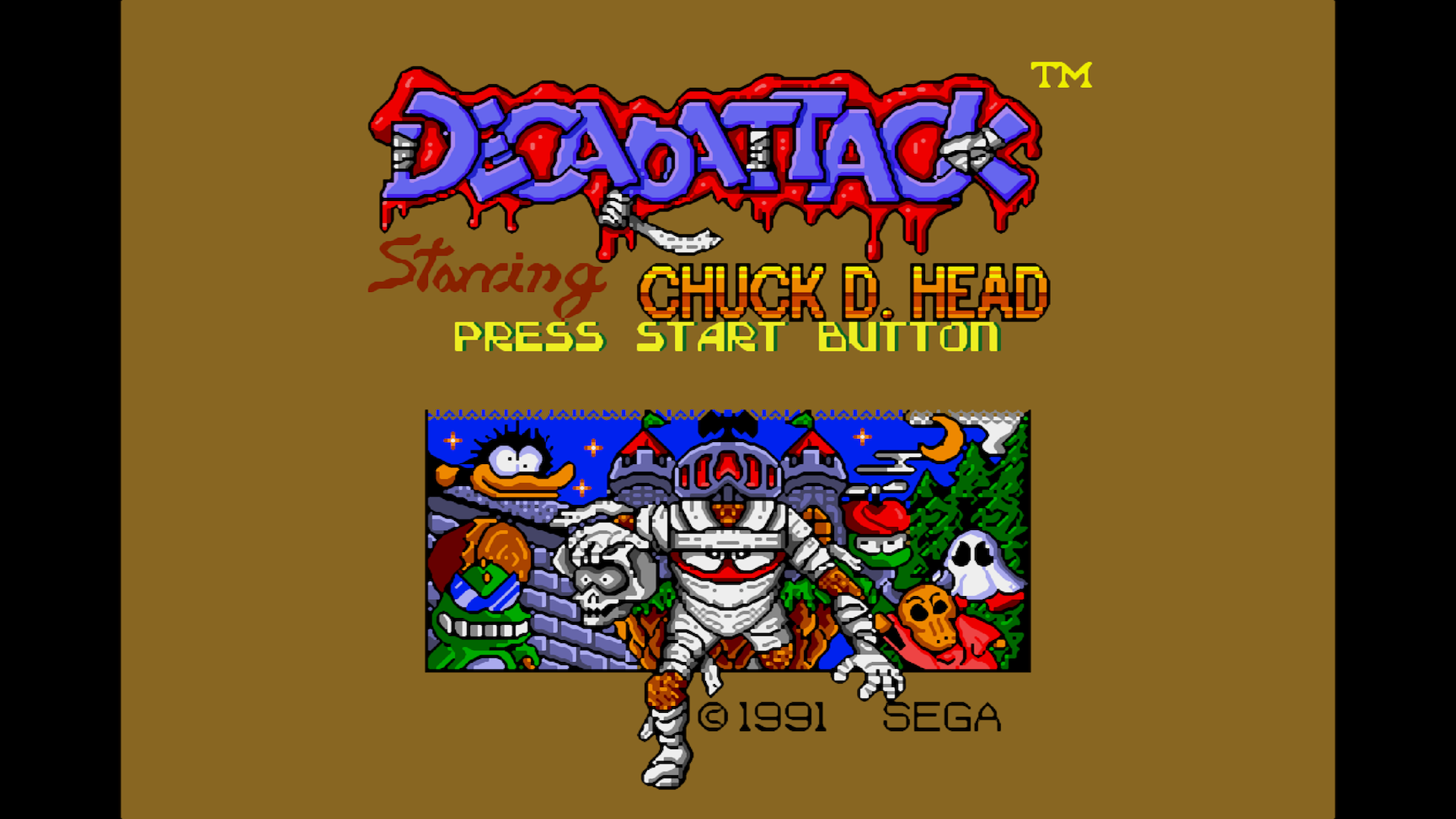
Decap Attack stars Chuck D. Head, a headless mummy created by Dr. Frank N. Stein who’s tasked with taking down the vile Max D. Cap, a demon bent on domination of the world above. Along the way, Chuck visits a variety of worlds full of foes and bosses fitting of his quest.
Developed by Vic Tokai, the game is a platformer typical of a 16-bit game in the early 1990’s. The game borrows inspiration from games like Sonic the Hedgehog and the Castlevania series in its presentation. Each of the seven areas of the game is divided into three sections each with a boss fight at the end of every third section.
In the third section of each world, in addition to beating the boss, you’re also required to find a key item for Dr. Frank N. Stein. You can do these two tasks in any order you choose, though it’s usually best to get the item and then defeat the boss, saving yourself considerable time backtracking throughout the game’s levels which aren’t always as linear as you would expect. If I have one gripe with this game, it’s that the area three item is always hidden arbitrarily inside of a shrunken head statue, leading to you having to smash every statue in the level until you retrieve the item.
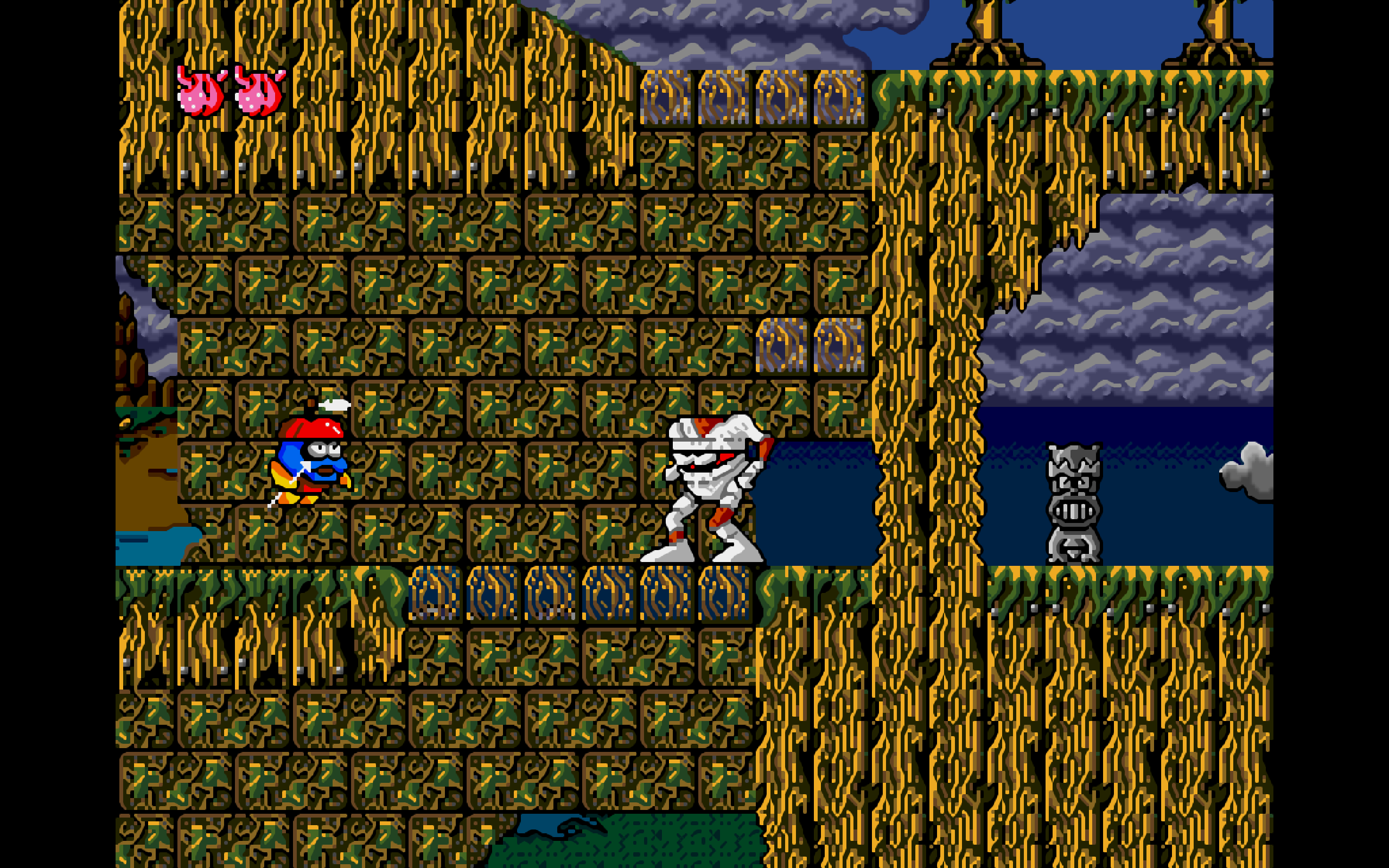 Much like Castlevania, the game hides powerups inside of breakable items around the level. This time around, the items are located in shrunken head statues. All of your common powerups are present and accounted for: temporary invincibility, wiping out all the enemies on screen, as well as jump and attack boosts. Unique to this game is the head powerup, which places a head on Chuck’s shoulders that he can then lob at enemies. After a few seconds it returns to him like a boomerang, though getting hit will cause the player to lose this item. Even when the player doesn’t have access to the head, Chuck still has one primary attack that involves hitting enemies with the face located in his midsection. Playing through the game, I couldn’t help but mentally equate his face attack to the whip wielded by the Belmont family in Konami’s Castlevania franchise. Chuck is also able to jump on enemies to defeat them, though this method requires three hits per baddie, instead of one.
Much like Castlevania, the game hides powerups inside of breakable items around the level. This time around, the items are located in shrunken head statues. All of your common powerups are present and accounted for: temporary invincibility, wiping out all the enemies on screen, as well as jump and attack boosts. Unique to this game is the head powerup, which places a head on Chuck’s shoulders that he can then lob at enemies. After a few seconds it returns to him like a boomerang, though getting hit will cause the player to lose this item. Even when the player doesn’t have access to the head, Chuck still has one primary attack that involves hitting enemies with the face located in his midsection. Playing through the game, I couldn’t help but mentally equate his face attack to the whip wielded by the Belmont family in Konami’s Castlevania franchise. Chuck is also able to jump on enemies to defeat them, though this method requires three hits per baddie, instead of one.
In addition, the game features a bonus game that is powered by the coins you can also find hidden in the statues throughout the game. The bonus game is mostly one of chance, with you picking a path for Chuck to walk and then watching as he makes his way to the end. There’s then a roulette for what the final path will be before Chuck makes his final trek to either bonus lives, powerups, or nothing at all.
As far as the difficulty of the game is concerned, it’s actually not too bad. During the 80’s and 90’s, games often didn’t come with difficulty settings, but rather, were locked into one setting by the developers. Games released in Japan were well known for this, often being one hit kill games with no in-game checkpoints. When games were ported for American audiences, there often would be modifications made to the difficulty to better accommodate western gamers. In the case of Decap Attack, the one hit kill system of Magical Hat was replaced with the ability to set up to three hearts per life, or six hits before death.
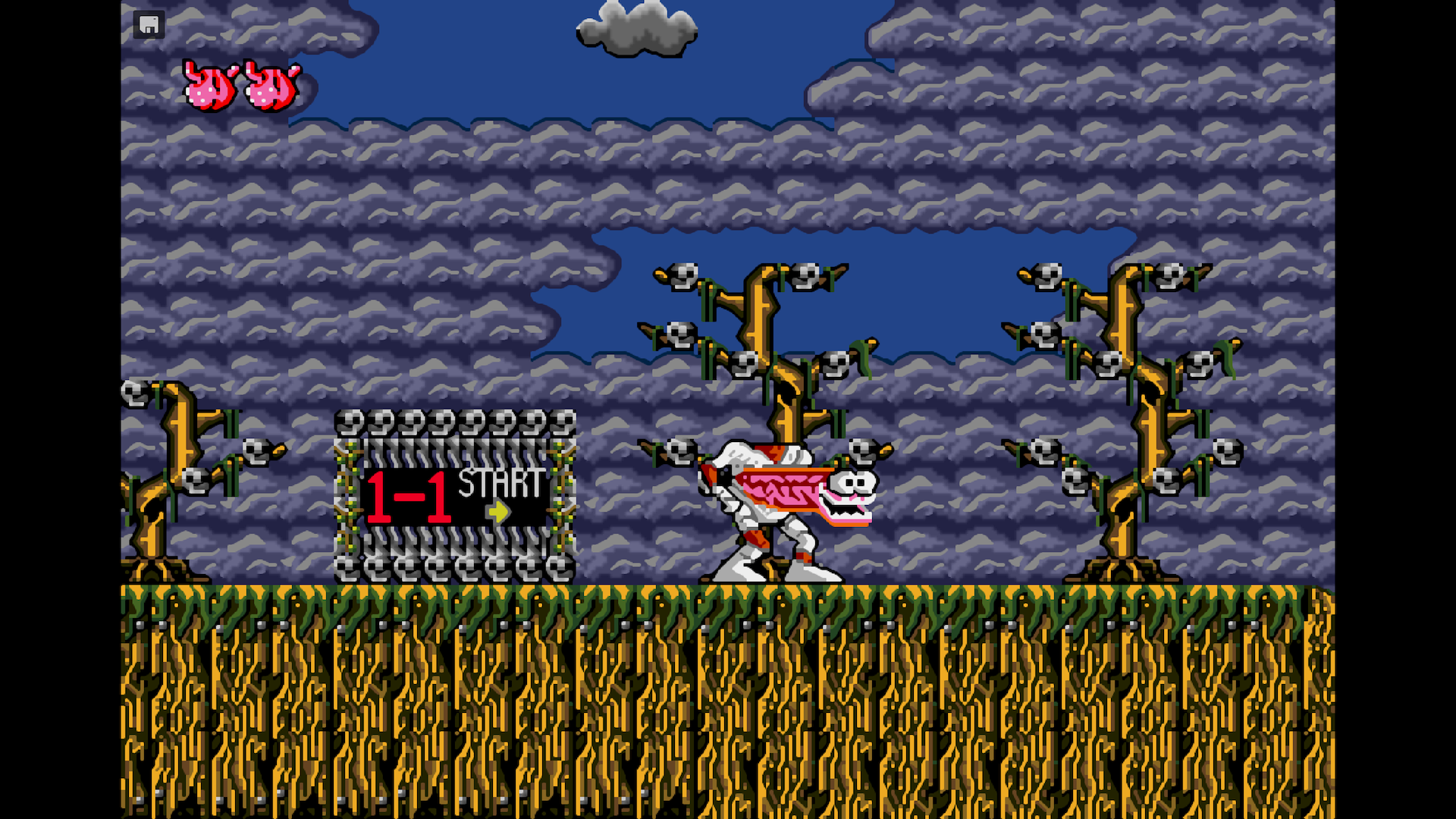
In contrast to the game’s Japanese release which was bright and colorful, much like the anime it’s based on, Decap Attack has darker and more muted color pallet, inspired by the same horror aesthetic that the game is based around. Itrelies heavily on deep reds, greys, greens, blues, and purples depending on the area. Enemies are designed in a mostly brighter set of colors that allow them to stand out against the bleakness of the levels. Still, other enemies like the Werewolf are grounded in reality and retain their iconic brown fur.
The levels of the game are filled with everything from dead trees, to skulls, to the item and enemy bearing shrunken head statues that feature about as prominent a place in this world as question mark blocks in the Mushroom Kingdom or candles in Dracula’s castle.
Focusing on the main sprite of Chuck for a moment, the character is surprisingly well done, given the time the game was released in. Taking a look at a still image of Chuck’s main attack shows that the designers went as far as to add the dark color highlights needed to add depth to the organ attached to Chuck’s face, a detail that’s hard to appreciate during normal gameplay.
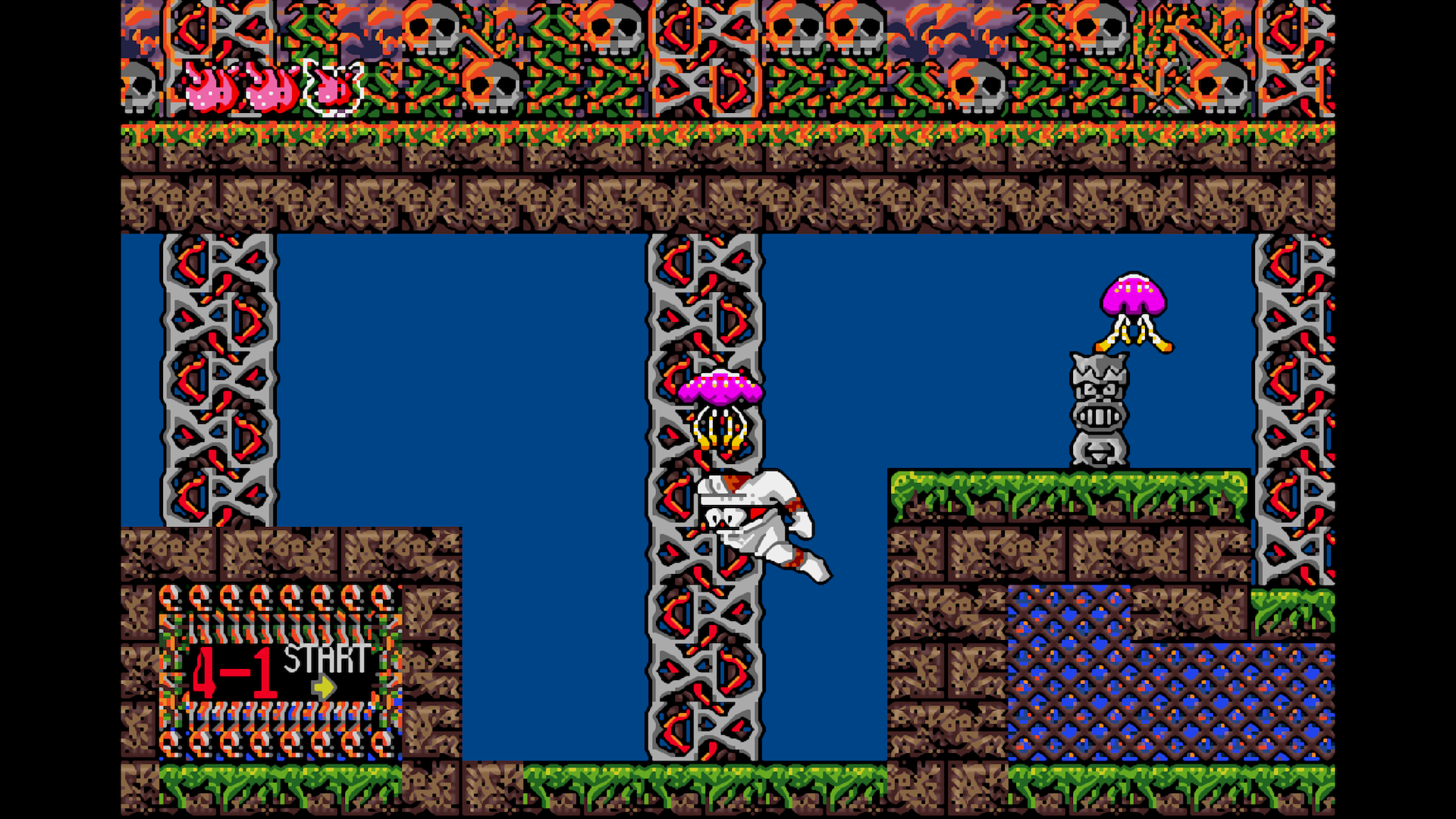 The game’s soundtrack was composed by Fumito Tamayama and Hiroto Kanno and I have to say they really knocked it out of the park. As far as 16-bit soundtracks go, this one is one of my favorites. Each area is given a theme that fits it accordingly and I’ve found the songs from this game stuck in my head over the years.
The game’s soundtrack was composed by Fumito Tamayama and Hiroto Kanno and I have to say they really knocked it out of the park. As far as 16-bit soundtracks go, this one is one of my favorites. Each area is given a theme that fits it accordingly and I’ve found the songs from this game stuck in my head over the years.
In short, Decap Attack is a classic Sega Genesis platformer that’s fun to look at and even more fun to play. It’s a game that was made simply to get around international distribution rights issues and it’s still as awesome today as it was then. The game has been included in several Sega game compilations and is also available on Steam as part of the Sega Genesis Classics Collection. This game is one that’s definitely worth checking out!










